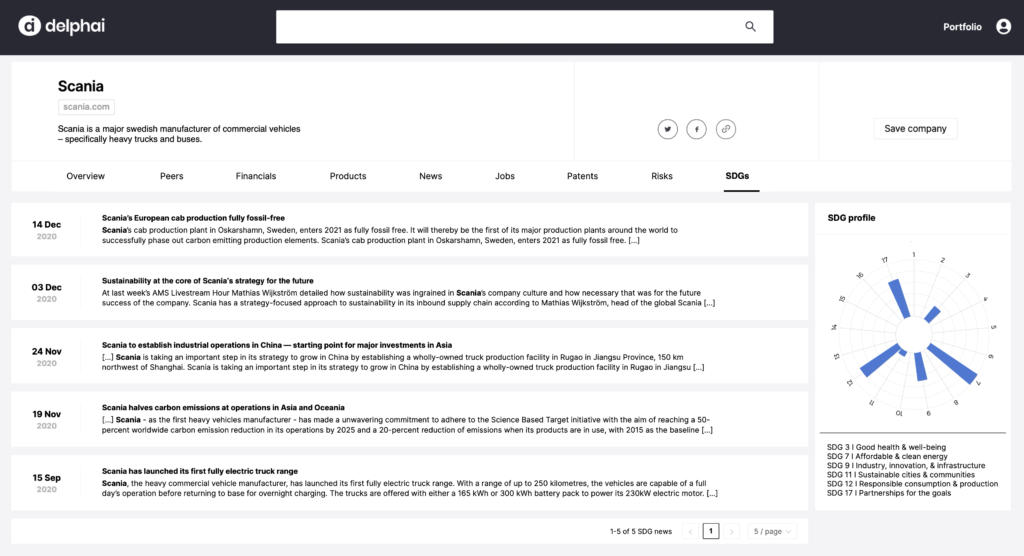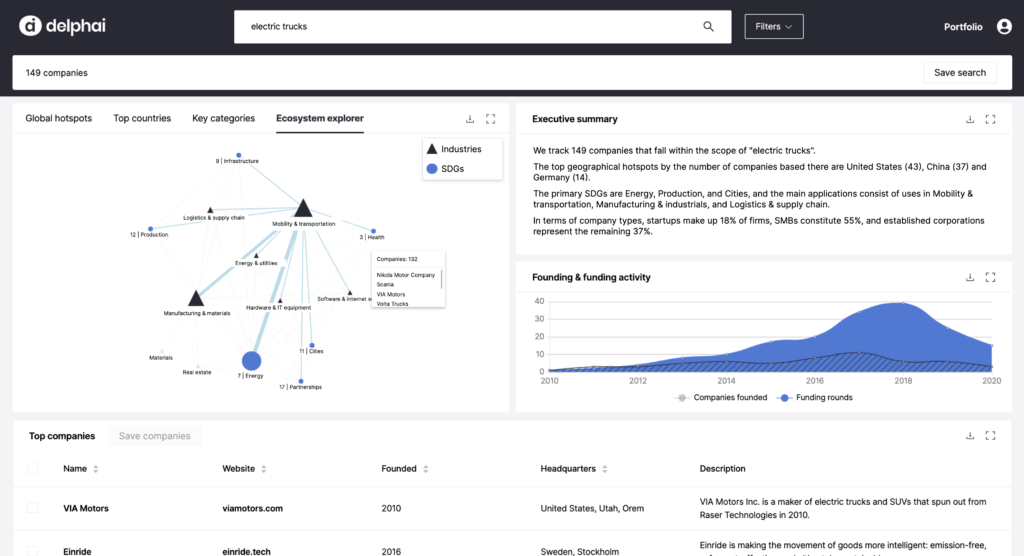Sustainability assessment: Assessing business potential through SDGs
Sustainability has taken a permanent seat in both public and private spheres.
- Governments are gradually adopting regulations and policies following the United Nations’ 17 Sustainable Development Goals (SDGs)
- Investors have begun to favor funding to companies with sound ESG (environmental, social, and corporate governance) metrics
- Consumers are ever more informed and seek out brands that communicate and showcase their positive environmental impact
- Companies have begun to enhance their brand with sustainability messaging and building better employer brands using sustainability arguments to attract top talents
With governments and investors looking to incentivize more sustainable practices, while discouraging the lack thereof, integrating the SDGs into company strategy has become a key factor of success and competitive advantage. More specifically, introducing environmental and social best practices is not just the inherent responsibility of every global actor, it also leads to compelling economic benefits:
- The overall business case: A review of about 2,200 empirical studies found that 90% exhibit a positive relation between ESG criteria and corporate financial performance.
- Risk management: By considering sustainability aspects in all areas of business, companies can reduce operational, reputational, and regulatory risks and ensure access to capital, value-creation, and operational security now and in the future.
- Cost savings: The German government’s climate protection program 2030 outlines concrete support schemes and incentives for businesses to become more sustainable: from tax breaks for electric vehicles to favorable loans for energy efficiency projects.
The 17 SDGs and their 169 sub-targets are recognized as a universal framework for sustainability analysis, present a common set of goals, and provide the language to communicate and align global efforts.
The following 3-step guide unpacks how businesses can analyze their operations following the 169 SDG sub-targets with delphai, finding the most promising starting point for realizing their sustainability potential and communicating their contribution.
Unlocking sustainability potential in 3 steps
The task at hand is complex and time-consuming but technology is here to help. Artificial intelligence and machine learning have the capability to quickly make an assessment of existing sustainability potential, run competitive analyses, and identify promising partnerships.
Using technology, companies can simplify the process of integrating sustainability considerations into their business activities in three easy steps:
Step 1: Understand your business through the framework of the SDGs
Truth is, your organization might already be contributing to achieving one or two of the SDGs targets. An assessment of strategies, processes, and activities might surprise you with hidden gems of sustainability potential. Manual analysis requires a deep understanding of all 169 sub-targets in detail. This would most probably require a focus group armed with highlighters and post-its, ready to analyze all internal documentation. This is obviously not sustainable.
An AI solution like delphai can analyze millions of pages worth of documentation within seconds, identifying sustainability-related business practices, and automatically labeling them according to the 169 sub-targets set out in the global Sustainable Development Goals.
Organizations can analyze their business activities almost instantly by using technology, and gain a clear overview of their touchpoints:

Step 2: Assess the competitive landscape
Sustainability is a competitive edge. Investors, as well as consumers, favor companies that consider and communicate their social and environmental impact. Making an assessment of competitors’ sustainability efforts is a good strategy to stay competitive, find inspiration in what industry leaders are doing, and learn from their success. What if, understanding a competitor’s SDG strategy was just a click away instead of buried under days of research and analysis?
delphai’s self-service dashboard enables organizations to make this assessment of competitors based on their SDG profiles. The results show exactly which SDG targets competitors are hitting, and where their blind spots are. And this analysis is not limited to single firms. AI technology can almost instantly process and label massive company datasets. So within seconds, the technology can scan a cluster, region, or entire market for sustainability relevance and map the competitive landscape.
But sustainability does not always have to be a competition. Working together is indeed anchored in the SDGs themselves (Goal 17) and is often considered best practice. Finding companies with complementary focus areas has been proven to be a great strategy to enhance sustainability efforts. And, of course, such purpose-driven partnerships have the potential to also carry commercial benefits in the long term. That is why delphai’s technology can make an assessment of competitors and identify sustainability allies. A closer look at the ecosystem viewer reveals potential partners with aligned interests:

Step 3: Communicate your sustainability efforts
While the SDGs provide a common language for stakeholders around the world to talk about sustainability, clearly communicating efforts in relation to 169 targets is an overwhelming task for every business. Understanding which Global Goals are already being addressed internally (step 1: your sustainability potential) and externally (step 2: competitors and partners) is the starting point. Organizations can then use this analysis to focus their efforts, select activities in impact areas, set relevant KPIs, and communicate their sustainability efforts to relevant stakeholders using the common SDG language.
Schedule a meeting to learn more about delphai and how it can enable organizations to unlock their sustainability potential.

